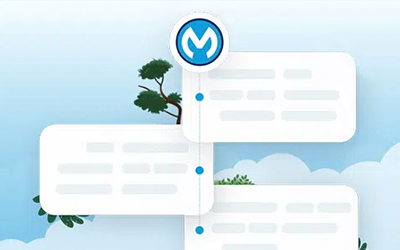Your business has likely adopted more technology in recent years. MuleSoft’s 2023 Connectivity Benchmark Report found that organisations now use 218 more applications on average than they did only two years ago.
Many of these systems do not come with native integrations, which creates disparate systems within your organisation instead of an interconnected web. As a result, managing all aspects of your business becomes increasingly tricky as you collect more systems, processes and data.
You might be familiar with the following challenges. You have to switch between applications to find data crucial to your internal operations and customer service function. When you need reports produced, someone in the business has to gather data from multiple sources without a single version of the truth.
When problems like these arise in your business, consider integration services.
Source: MuleSoft 2023 Connectivity Benchmark Report.
What are Integration Services?
Integration services connect your disparate systems and data sources to ensure you do not have to continue grappling with the above-mentioned issues. You might leverage integration services to connect a wide variety of your business systems, including accounting, customer relationship management (CRM), enterprise resource planning (ERP), and HR systems.
An integration services provider will analyse your systems, determine the best way to connect them, and ensure that data moves smoothly between your applications. They often do this through application programming interfaces (APIs), connecting to a cloud-based service, or using specialised software.
What benefits does systems integration deliver?
Remove data silos and revive legacy systems
Data silos occur when two or more disconnected systems store the same data types. For example, you might have two departments within your business adding customer information into two databases; your in-store system has one set of details, and your e-commerce system holds another set. There is no way to know which set of details is correct.
Integration services enable you to remove data silos and improve decision-making by ensuring data flows between your systems. So, when new customers enter their details into your e-commerce system, this information becomes available to your in-store team.
Legacy systems could also contribute to problems with data silos because they do not have the capabilities to communicate with your other platforms. An integration services provider can help you unlock data trapped in your legacy systems so that you can use it alongside new technology.
Gain insights and find opportunities for improvement
When your systems communicate and your data becomes readily available wherever you need it, it becomes easier to spot areas for improvement and make data-informed decisions.
An integration services provider brings together data from different sources, creating a holistic view of your organisation. This might come in the form of reports in a daily, weekly or monthly cadence; with your data brought together and at your fingertips, you can make the most of information that would otherwise remain hidden.
By integrating data from various sources, businesses can ensure they have a complete picture of their operations to make better decisions and improve their overall performance.
Improve data quality by automating processes
Additionally, integration services can help businesses save time and money by automating tasks that people often complete manually. Poor data quality and inaccuracy can occur when you have siloes or people entering information manually. Integration services are critical for businesses that need more confidence in their data accuracy.
An integration services provider bridges the gap by delivering systems that allow data to flow and provide a solution to automate data entry to reduce the stress on your team and ensure data accuracy.
Boost the employee experience
Integration services can provide a better employee experience by simplifying and automating data entry across multiple systems. By integrating these systems, employees can access the information they need from a single interface, eliminating the need to switch between multiple applications. This can improve productivity and reduce frustration, making for a better overall employee experience. In addition, integration can ensure that data is up-to-date, providing employees with the most accurate information possible.
Reduce and optimise your costs
Integration can reduce and optimise your costs in a few ways. As mentioned above, integration can reduce the manual work people complete, meaning they have more time to focus on their core job. You may have considered hiring people to fill these positions because your team was overwhelmed; however, if you automated manual processes that do not require human thinking, you might not need to hire that extra person.
Additionally, errors in your data can become costly. For example, outdated or incorrect customer data can breed errors, which frustrates customers and reduces the likelihood that they do business with you in future. Integration services improve data quality, which can lessen the number of customers that churn.
What methods will an integration services provider use?
You might wonder how all of this becomes achievable; if two systems were not designed to communicate, how can they be integrated?
The following strategies are only a few of the techniques we use to implement integration services for our customers:
API development and management
APIs connect your systems by enabling applications to send data securely to each other. Systems integrators often use APIs to connect applications to automate tasks or data exchange. Additionally, APIs can help to standardise data formats and communication protocols between your different systems.
Service Oriented Architecture (SOA)
SOA makes software components reusable for connecting applications by standardising how they communicate. Systems integrators use SOA to connect applications to enable greater flexibility when connecting systems because developers can connect many apps with one method rather than completing complex, point-to-point integration.
Integration Platform as a Service (iPaaS)
iPaaS is a cloud computing platform that provides middleware and other tools to help developers connect different software applications and data sources. iPaaS can build, deploy, and manage integrations in the cloud or on-premises.
iPaaS addresses the challenges of traditional enterprise integration solutions, which are often complex, expensive, and difficult to maintain. iPaaS provides tools for connecting applications and data sources, including connectors, adapters, transformation engines, workflow designers, and more.
MakeSense is your partner for Integration Services
You have a business vision, but are you unsure where to start? We know that mapping the next steps of your integration strategy feels daunting, and we believe having a second pair of eyes to find direction is the starting point.
MakeSense delivers consulting and strategy, architecture and design, implementation, and support solutions. We are end-to-end MuleSoft experts and wholly believe in the returns generated by their platforms.
Our experts can assess your current strategy, make recommendations, and implement a solution. Learn more about our Integration Services and how we can support your business.









